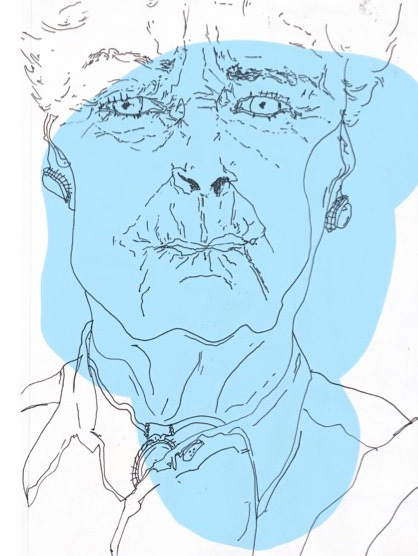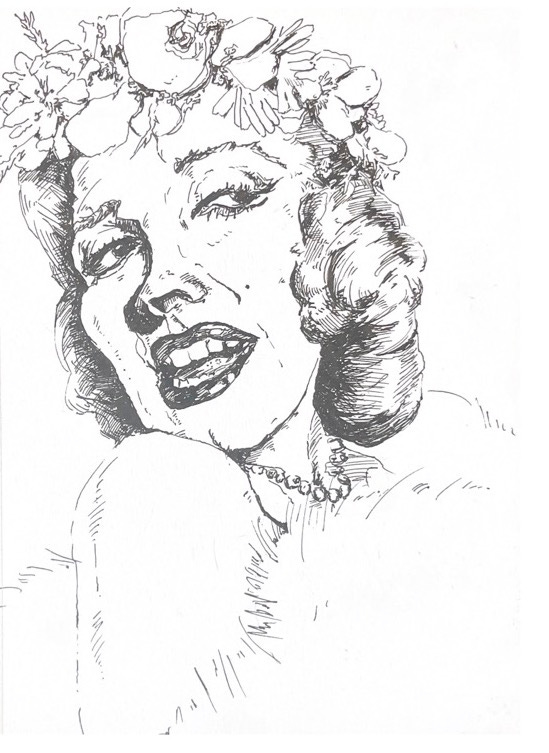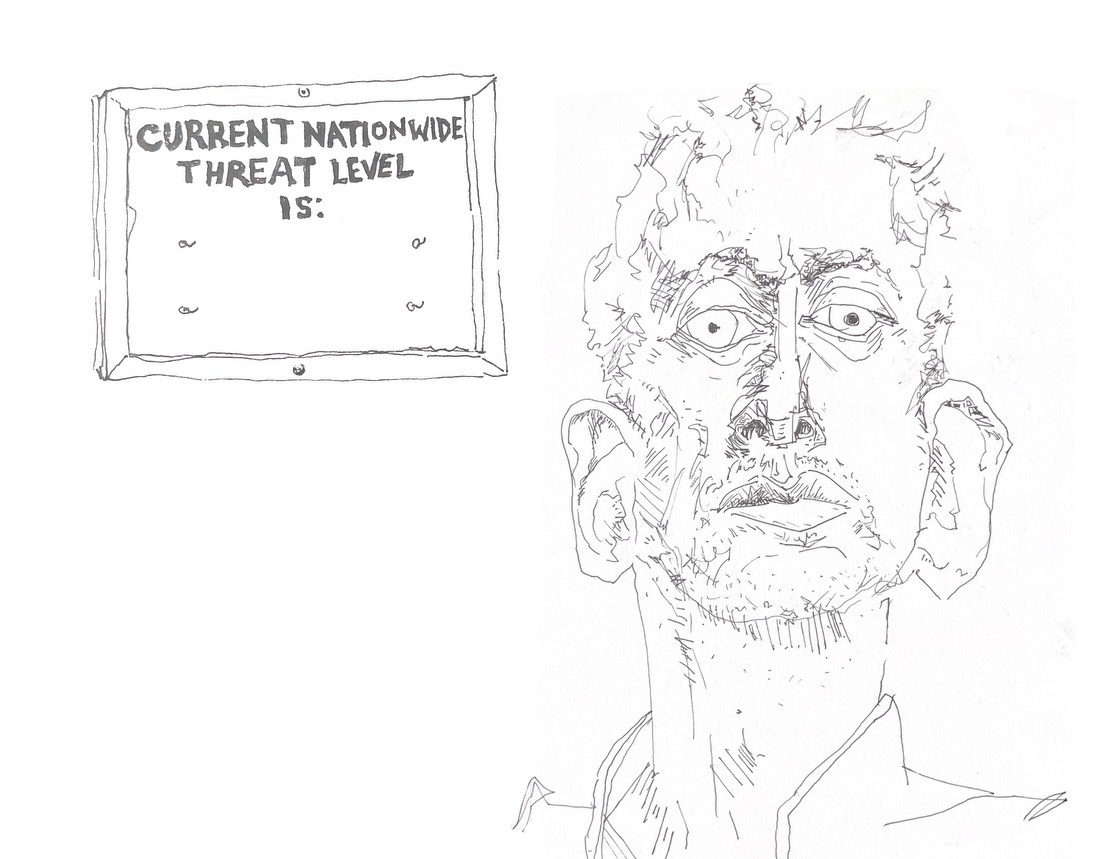Letters from Edgartown, Part 3
My time on Martha's Vineyard
While recently attending a writing fellowship on Martha’s Vineyard, I decided to keep a journal documenting my day-to-day when I wasn’t writing other things. The following installments have been minimally edited to preserve the initial spirit of spontaneous discovery and synthesis of the journal’s assembly.
Thursday, June 20
Much less time to journal today.
Saw a robotic lawnmower. Like a roomba but for the grass lawn outside of a wedding venue. Its effort was negligible, having already sheared its patch of grass over and over again. It drifted listlessly in search of a few strands yet to be cut. When it got closer to me, I saw a big red button on its back that said “STOP.” Considered putting it out of the misery of its Sisyphean task.
Saw a worn chalk-white school bus labeled “Vineyard Sightseeing” occupied by a few passengers. It looked like a repurposed prison bus, or at least a bus that had previously been dug out of a ditch.
When I went to get a burger (more reasonably priced than other food here, though it still contained a bit of that pesky “Martha’s Vineyard” fee, the upcharge simply for being here and consuming in proximity to the Atlantic Ocean that I cannot seem to shake) a man walked to the counter holding a cardboard box of paper products and asked for the manager.
“I’m a paper products vendor,” he said, “I’m just going around to local businesses and offering some of what I make.” In the box were cups, napkins, lids, and some plates. All made from the wheaty brown pulp that made his paper and its subsequent products.
“I’ll give this to my manager,” said the cashier.
“Alright,” said the paper vendor, “I’ll be back in thirty minutes.”
The only liquor stores in the area close at 7PM, probably to facilitate the sale of alcohol at the few bars in downtown Edgartown instead. I walked past the bar on the way back to the house from getting ice cream (I caved and bought a $7 small as a treat to myself). The bar was loud, most of the noise coming from a group of men watching one of their posse playing video games on an arcade machine towards the front window.
To my right, the depths of downtown from which I had emerged. Twin teenage boys sat on a sidewalk bench eating ice cream. They wore the same shirts of alternating blue and white stripes with khaki shorts. One had slightly more acne. To my left, the streetlamps shone bright white, so bright they blindly the nighttime viewer instead of providing a visible street. They mingled with the LED headlights of cars, forming a disparate pathway along which to stumble home.
Friday, June 21
The weekend has begun. More movement, just like the day before. See Sunday for thoughts.
What constitutes fine art at the Vineyard? I asked myself as I passed by an art gallery connected to a hotel. What could a person be enticed to stay and look at?
Framed by the entryway of the gallery was a large portrait of Marilyn Monroe wearing a headpiece made of pink flowers: an anachronistic mishmash of aesthetic icons that seemed to imply an effort to simulate culture without the patience of culture’s accumulation. Most of the artwork on display iterated around the same visuals of the beach, the docks, and water. ‘You are near the ocean,’ it all says, just like the seats on the bus. The collection bearing the most conventions of realism was entitled “Kitsch Americana” by Rob Brooks. One painting depicted an icebox on a dock at dusk. It was called “Twilight Ice” (a later delve into his portfolio revealed twenty five more paintings of iceboxes, an almost pathological need to depict the icebox in its various contexts). His other paintings in the collection depicted repeated motifs as well: Volkswagen vans, beach balls, and semaphore flags. All devoid of human figures.
The other collection, by James Wolanin depicted two women with caramel-tanned skin by bodies of water. Human, yet incorporeal in their perfection: they looked as if they had been taken from a larger billboard depicting a Utopian vacation spot off the interstate. “Soak up the sun at Martha’s Vineyard!” it might say. The gallery website offers a brief description of his work:
“Identifying with Pop artists like Andy Warhol and James Rosenquist, Wolanin taps into our culture’s collective visual conscious, creating vibrant, stylized reflections of American life. Sunny skies, bright smiles, and carefree Sunday drives characterize the artist’s utopic vision, which blends a nostalgia for mid-century America with a contemporary aesthetic. He notes, ‘I try to bring the viewer back to a simpler time, a time of innocence.’”
Perhaps this is the center of the gravitational pull of Martha’s Vineyard, the ethos that exists to keep it together. It is simpler in Edgartown, but the facilitation of such simplicity and innocence engenders a certain eeriness, a lost vitality between the parallel courses each different pod of vacationers follows. And so, even in their goal of utopian depiction of the island, of Northeastern Americana, truth comes through in the uncanniness of the paintings on display: preppiness is kitsch. Martha’s Vineyard is a kitsch place. If I don the conventional baby blue polo shirt, loafers with logo-emblazoned socks, and American flag beach towel, I too am an islander. It is a kitsch identity.
Kitsch and eeriness have remained on my mind because where one is found, the other is not far off. Island kitsch is the corpse of regurgitated culture laying in anticipation of a human to attempt resuscitation on it for one more summer season. Kitsch is the transposition of human activities into distinctly unhuman places. The smiling starfish on the bus seats is kitsch. The Lilly Pulitzer dresses printed with maps of the island are kitsch. The smiling red lobster above the grocery store lobster case filled with brown live ones rubbing bound claws against the display glass, kitsch as well.
Saturday, June 22
My final day in Edgartown, and on the Island. This time I am taking the ferry from Oak Bluffs instead of Vineyard Haven (Vineyard Haven’s ferry would have me on the mainland an hour and a half before my bus departs. As strange as I have found Martha’s Vineyard, I want even less to spend more time than I need in the parking lot of a southern Massachusetts bus depot). I took the bus at a point in the morning that hardly anyone had woken for travel within the island.
It was sleepy, the sky still blanketed in clouds from scattered rain the night before. My parents always made me wear sunscreen on overcast days—they told me that the UV rays remained trapped beneath the cloud layer and could be even more dangerous as a result. I didn’t know the science behind it, so I imagined it like ping pong balls bouncing faster and harder inside of a shrinking container.
There was a sign next to the ticketing window: “Current Nationwide Threat Level is: _______,” as if an ominous deterrent against leaving the island. The sentence was incomplete, possibly to encourage people to complete it with their own anxieties. The mainland was dangerous indeed, and the weekly showing of Jaws was so close anyway. Wouldn’t it be so much nicer to stay until tomorrow? To watch it and allow popcorn to gently fall from my mouth in amazement as I pointed to the places I recognized?
My friend loves Jaws, particularly because the shark is never actually seen until the end of the movie, its eeriness is instead accrued through cracks in the routine of the summer. The island had a disconcerting effect on me, one that cannot be so easily blamed on issues of class and cultural homogeneity, like the “religion” I’d heard the woman from the ferry talking about on the day I arrived. The culture of Martha’s Vineyard is one of fixation. It is cyclical by nature, grinding itself down with the constant upkeep of its choreography. How many times can a person watch Jaws? How many times must the gas-bloated shark’s corpse be dragged from the water, down Main Street, to the movie theater for its weekly viewing? How long does it take to fit together cartilage and chum to un-disembowel the fish? To piece together its form?
In line for the ferry’s departure, I noticed a pink fish swimming sideways in the water in order to feed off of the algae that grew on the side of the boardwalk. It bobbed laterally, halfway to going belly-up. The only thing suggesting life were the small ripples formed by the movement of its fins and mouth. When the ferry’s horn blew, I continued aboard.
“Current Nationwide Threat Level is ______” I thought, the sun in the eyes of the sideways fish, and the sun in mine.
Part 3 of 3
Image credits (in order): “Pursing” by Renee Vetter, “Reproduction of Marilyn Monroe in Flower Crown” by Renee Vetter, “Current Nationwide Threat Level Is” by Renee Vetter





This was my favourite in the series. Thanks for sharing!